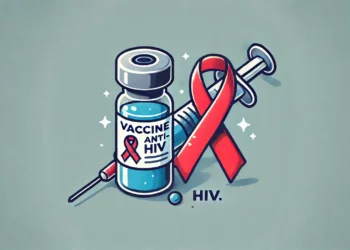How’s that for internal conflict, eh, soccer moms?

Image credits muffinn / Flickr.
An international team of researchers, with members from Spain, the U.S., and the U.K., plans to fight HIV using only cereal; namely, rice. In a new paper, they describe how they developed a strain of the plant that produces HIV-neutralizing proteins, and how the resulting rice can be used to prevent the spread of this disease.
Rice 2.0
“Our paper provides an approach for the durable deployment of anti-HIV agents in the developing world,” the team writes.
HIV isn’t the death sentence it used to be. Researchers and doctors have had quite a lot of success in developing treatments for people infected with HIV and — at least in more developed countries — death rates associated with HIV have declined significantly. The real prize is to develop a functional vaccine against the virus, an endeavor which has so far borne no fruit.
Still, since we don’t yet have such a vaccine ready, oral medication has been developed that can keep an infection at bay for a limited amount of time. However, such treatments are still expensive — prohibitively so for the many areas in third world countries that are struggling under high rates of HIV infection. Compounding the problem is that production of such drugs — involving a process known as recombinant protein manufacturing — is technologically-intensive and time-consuming, meaning that any production facilities these countries could put together wouldn’t come anywhere near to satisfying demand.
Here’s where the rice comes in. The strain engineered by the team synthesizes the same HIV-neutralizing compounds used in oral medication. Once the crop is fully grown, farmers can process the grains to make a topical cream and apply it to their skin — allowing these active compounds to enter the body. The rice plants produce one type of (monoclonal) antibody and two kinds of proteins that bind directly to the HIV virus (the lectins griffithsin and cyanovirin-N), preventing them from interacting with human cells.
“Simultaneous expression in the same plant allows the crude seed extract to be used directly as a topical microbicide cocktail, avoiding the costs of multiple downstream processes,” the team explains in their paper “This groundbreaking strategy is realistically the only way that microbicidal cocktails can be manufactured at a cost low enough for the developing world, where HIV prophylaxis is most in demand.”
Turning the seeds into cream is a very simple process, the team notes, allowing virtually anybody anywhere to have access to an HIV treatment option if required. It’s also virtually free once you have the rice. The team hopes that people living in areas with high rates of infection will simply grow as much of the rice as they need, potentially providing treatment for whole communities at a time.
However, there’s still work to be done before the GMO rice hits paddies around the world. The team wants to run an exhaustive battery of tests to ensure that their genetic machinations didn’t introduce genes for unknown (and potentially harmful) chemicals in the plants.
They’re also very much aware that GMOs are a subject of much debate, and their efforts might have to suffer from the controversy that has built around GM crops in recent years. There will also be regulatory hurdles to overcome in each part of the world where the rice might be grown and used.
The paper “Unexpected synergistic HIV neutralization by a triple microbicide produced in rice endosperm” has been published in the journal Proceedings of the National Academy of Sciences.






